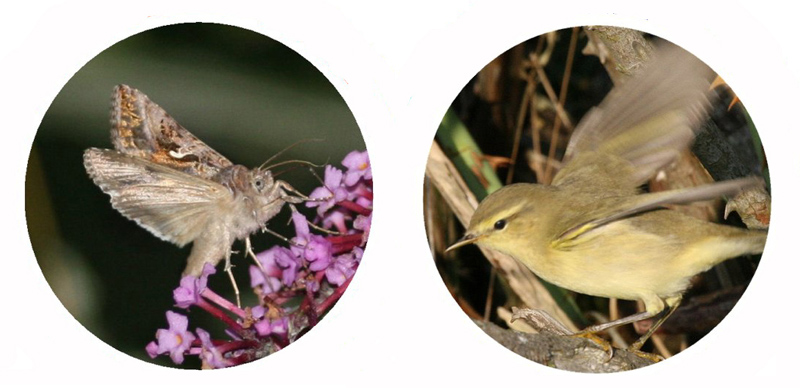
Don Reynolds is a co-author of a paper just published (9 March 2011) in Proceedings of the Royal Society B. The study used specially-designed radars to compare the migratory performance of Silver-Y moths and songbirds migrating between their summer breeding grounds in northern Europe and their winter quarters in the Mediterranean region and beyond. Surprisingly, migratory speeds and directions were found to be remarkably similar in the two groups, despite the obvious differences in size and flight capacity.
This similarity results from contrasting strategies: moths fly only on favourable tailwinds so gaining the maximum degree of wind assistance, whereas birds fly on winds from a variety of directions, and consequently receive less assistance. The moth strategy is evidently successful – migrant moths are becoming more abundant in northern Europe – whereas many species of songbirds are undergoing serious declines. These contrasting fortunes might be partly explained by the highly efficient migration strategies employed by the insects.
See "Convergent Patterns of Long-distance Nocturnal Migration in Noctuid Moths and Passerine Birds" by T. Alerstam, J.W. Chapman, J. Bäckman, A.D. Smith, H. Karlsson, C.Nilsson, D. R. Reynolds, R.H.G. Klaassen and J.K. Hill. Proceedings of the Royal Society B. doi:10.1098/rspb.2011.0058

